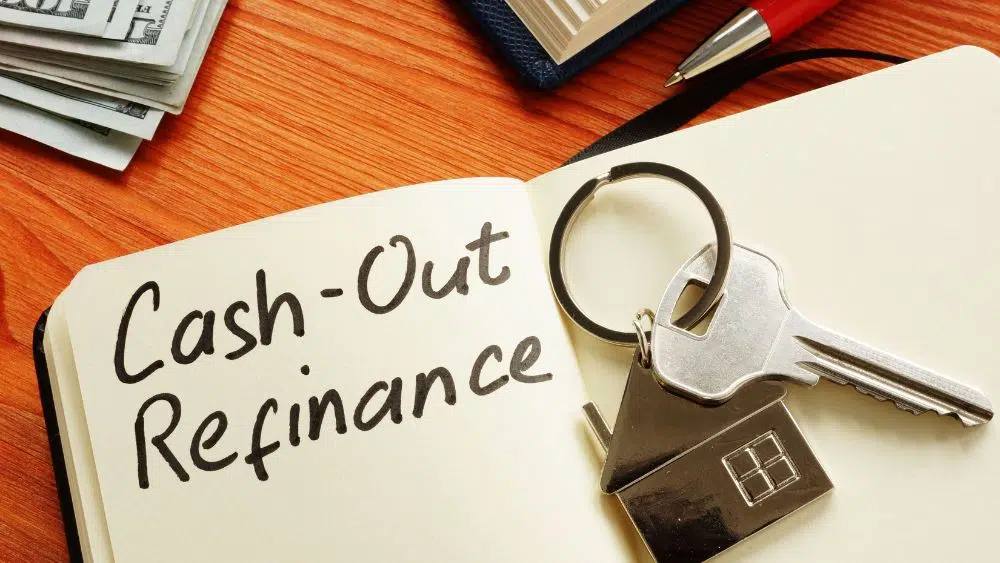Cash-out refinancing is a popular option for homeowners looking to tap into the value of their home to access cash for various needs, such as home renovations, debt consolidation, or other major expenses. If you’re considering this type of refinance, understanding the ins and outs is essential for making an informed decision. Here’s everything you need to know about cash-out refinancing.
What Is Cash-Out Refinancing?
Cash-out refinancing involves replacing your existing mortgage with a new one that has a higher loan amount. The difference between the new loan and the old loan is paid to you in cash. Essentially, you are refinancing to take advantage of your home’s increased value to obtain cash that can be used for various purposes.
Example: If your home is valued at $400,000 and you owe $200,000 on your current mortgage, you might refinance to a new mortgage for $250,000. You would receive $50,000 in cash after paying off the existing loan.
How Does Cash-Out Refinancing Work?
The process of cash-out refinancing is similar to getting a new mortgage. You apply for a new loan, and the lender assesses your financial situation, credit score, and the value of your home. The new loan amount will be higher than your existing mortgage, and the difference is given to you in cash.
Steps to Cash-Out Refinancing:
- Assess Your Home’s Equity: You need at least 20% equity in your home to qualify for a cash-out refinance. Equity is the difference between the market value of your home and the amount you owe on your mortgage.
- Evaluate Your Financial Goals: Determine if the cash you receive will be used for something that aligns with your long-term financial goals, such as home improvements, paying off high-interest debt, or building an emergency fund.
- Compare Lenders: Shop around to compare interest rates, fees, and terms offered by different lenders to find the best deal.
- Apply for the Loan: Submit your application, provide necessary documentation, and undergo the underwriting process.
- Receive Your Funds: After closing, the lender pays off your existing mortgage, and the remaining funds are given to you as a lump sum.

Why Choose Cash-Out Refinancing?
Cash-out refinancing can offer significant benefits, but it’s not for everyone. Here are some reasons why homeowners might choose this option:
1. Home Renovations: Using cash to renovate your home can increase its value, making it a wise investment. Renovations like kitchen remodels, adding a new bathroom, or upgrading flooring can improve your home’s market value.
2. Debt Consolidation: Paying off high-interest debt, such as credit card balances or personal loans, can save you money in interest payments. A cash-out refinance can provide the funds needed to consolidate debt into one lower-interest mortgage payment.
3. Investment Opportunities: Homeowners may choose to use cash from refinancing to invest in other opportunities, such as buying rental properties, stocks, or starting a small business.
4. Emergency Expenses: Accessing cash can be a lifesaver for unexpected expenses like medical bills, tuition, or major car repairs.

Pros of Cash-Out Refinancing
1. Lower Interest Rates: Mortgage rates are typically lower than the rates on credit cards and personal loans. Using a cash-out refinance to pay off high-interest debt can help you save money in the long term.
2. Potential Tax Benefits: Mortgage interest on a home loan is often tax-deductible. While tax laws vary, you might be able to deduct the interest on the portion of the loan that is used for home improvements. Consult a tax professional for details.
3. Increased Home Value: If you use the cash to renovate your home, you may increase its market value, which can be advantageous if you decide to sell in the future.
Cons of Cash-Out Refinancing
1. Higher Loan Balance: By refinancing, you’re increasing your mortgage balance, which means you’ll have higher monthly payments and potentially more interest paid over time.
2. Closing Costs: Like a traditional mortgage, cash-out refinancing comes with closing costs that can range from 2% to 5% of the loan amount. Make sure you factor this into your decision-making process.
3. Risk of Foreclosure: If you use cash-out refinancing to consolidate debt and your financial situation changes, you risk foreclosure if you can’t keep up with your new mortgage payments.
4. Changes in Loan Terms: You may end up with a longer loan term, which can mean paying more interest over the life of the loan, even if the monthly payments are lower.
Who Should Consider Cash-Out Refinancing?
Cash-out refinancing is a suitable option for homeowners who:
- Have sufficient equity in their home.
- Are looking to make significant investments, such as home improvements.
- Want to consolidate high-interest debt into a lower-interest mortgage.
- Have a plan to use the cash wisely and can afford the new monthly mortgage payments.
How to Prepare for a Cash-Out Refinance
1. Check Your Home Equity: Before considering cash-out refinancing, check your home’s current value and calculate your equity. You’ll need at least 20% equity to qualify.
2. Improve Your Credit Score: A higher credit score can help you qualify for better interest rates. Pay down debt, avoid opening new credit accounts, and make sure to pay bills on time to boost your credit score.
3. Shop Around for the Best Deal: Different lenders offer various terms, rates, and fees. Compare offers to find the best deal that meets your needs.
4. Understand the Risks: Know that cash-out refinancing comes with potential downsides, such as a higher loan balance and the risk of foreclosure if you fail to make payments.
Conclusion
Cash-out refinancing can be an excellent financial tool for homeowners who need to access the equity in their home. Whether you’re renovating, consolidating debt, or investing in new opportunities, this option offers a way to use your home’s value to your advantage. However, it’s important to carefully weigh the pros and cons and understand your financial situation before moving forward. Consulting with a mortgage expert can help guide you through the process and ensure you make the best decision for your financial future.

Hello welcome to my real estate service blog
